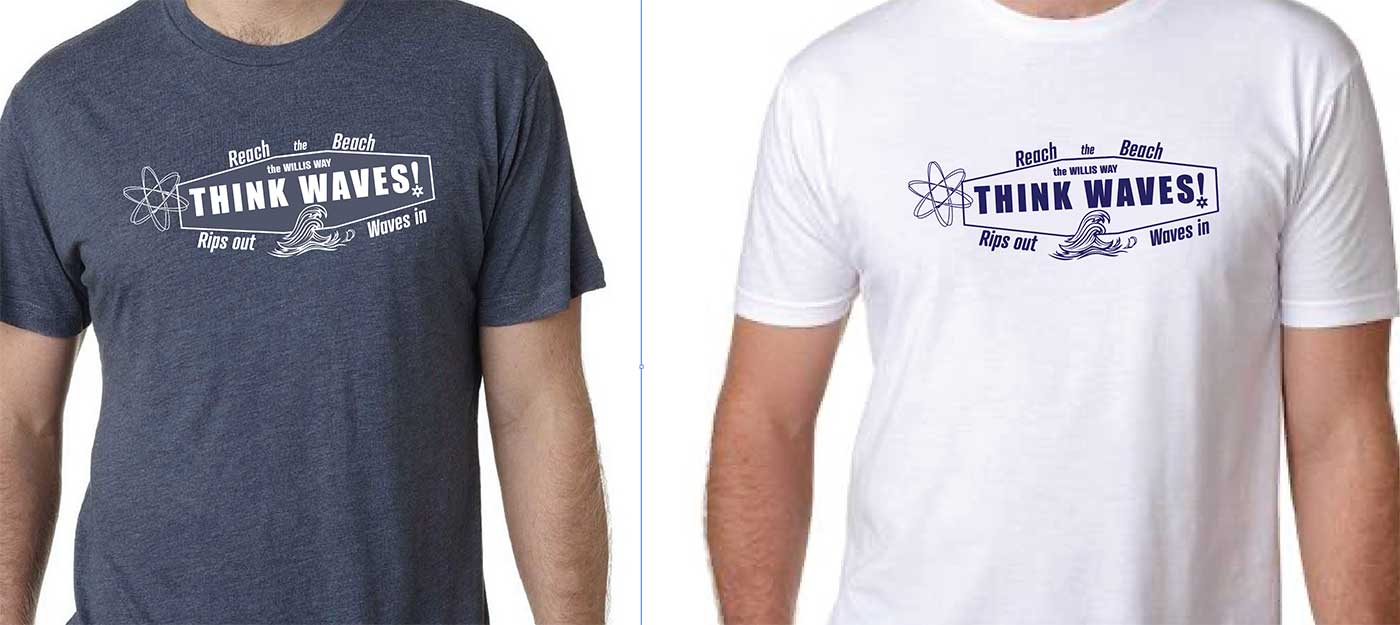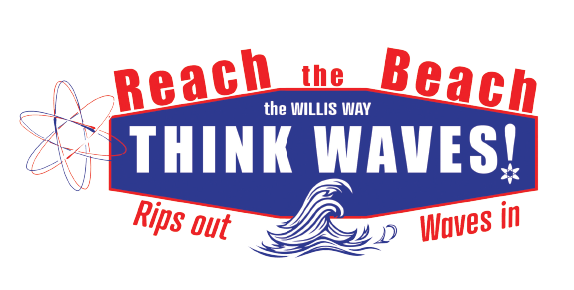THINK WAVES the Willis Way
EVERYTHING BEACH
100% of profits go to making common sense information Think Waves Common knowledge.
Remember a Scream can’t be Heard Underwater!!!
S. O. S.!!!
Teach Your Child the Willis Way to Avoid and or Escape Rip Currents…
THINK WAVES!!!
Rips Out… Wave In!!!
Help make THINK WAVES common Knowledge Worldwide by September 2021 and Help Save Lives!

THINK WAVES apparel line – coming soon!

Think Waves FAQ’s
Myth: Rip currents pull you under water
How far do most rip currents flow?
What is the most common cause of rip currentsS?
RIPCURRENTS are unpredictable and can be found on lakes and ocean inlets. Where ever there are waves there are RIPCURRENTS
How to spot a rip current
How to avoid stingrays
By shuffling your feet across the sandy bottom you can alert the stingray of your presence, they will uncover themselves and swim away. Stingrays don’t want to be stepped on anymore than you want to be stung!
For best results don’t touch the bottom. If you must touch the bottom do the stingrays shuffle followed by the stingrays tap. Tapping alerts them you are coming and they usually get out of the way.
How are rip currents formed?
RIPCURRENTS are affected by the bottom contours of the ocean floor. WAVES prefer the shallower sandbars and reefs. RIPCURRENTS prefer the deeper channels between sandbars and reefs. Water always seeks the path of least resistance..
YOUR SUPPORT IS ESSENTIAL TO THE SUCCESS OF OUR CAMPAIGN TO SAVE LIVES.
Your donations go directly towards support of our efforts to disseminate Ocean Safety Information and help prevent drownings. Through continued education, media, signs, posters, advertisements and campaigns so we can achieve this goal!
